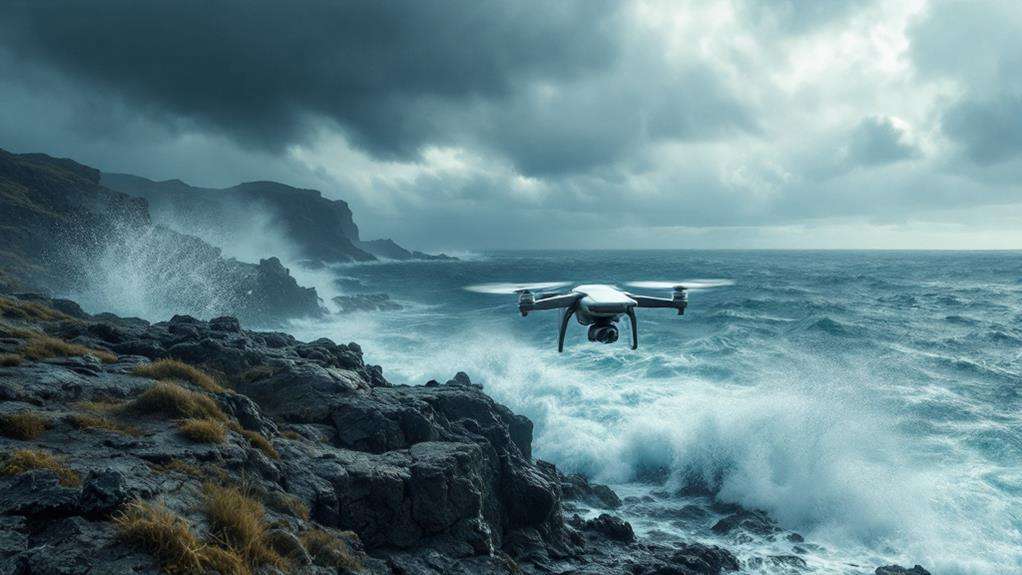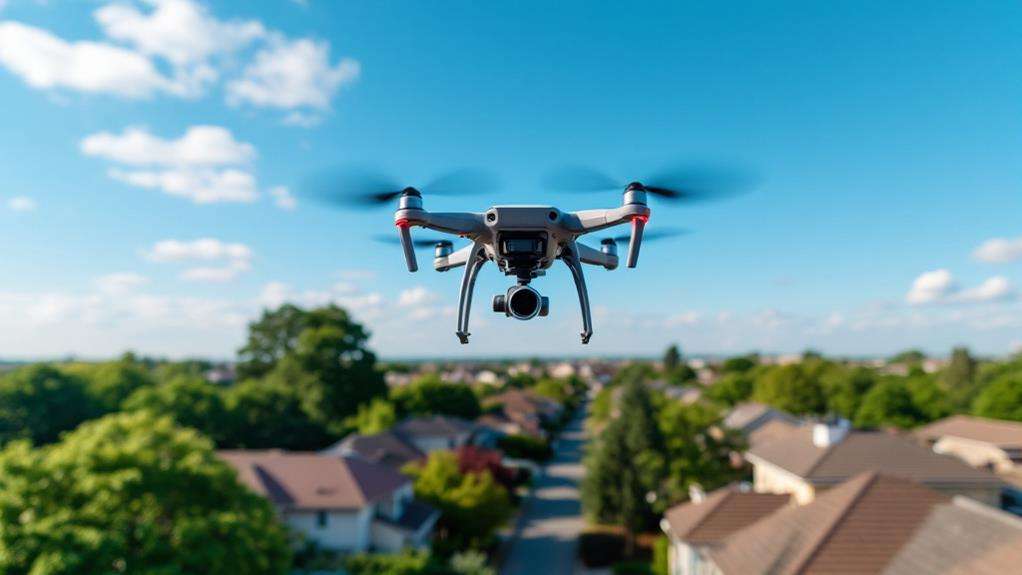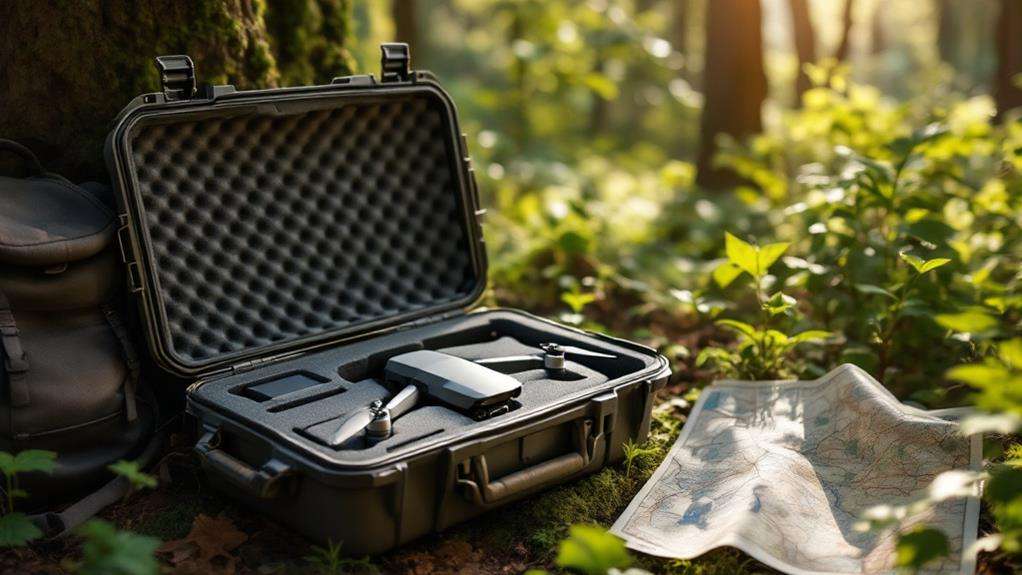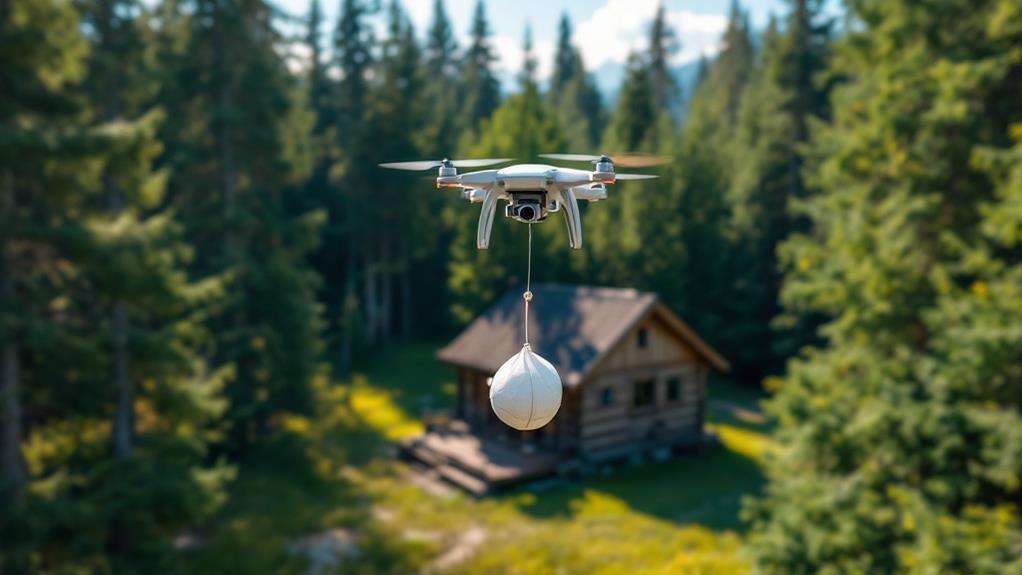Can You Add a Gimbal to a Drone?
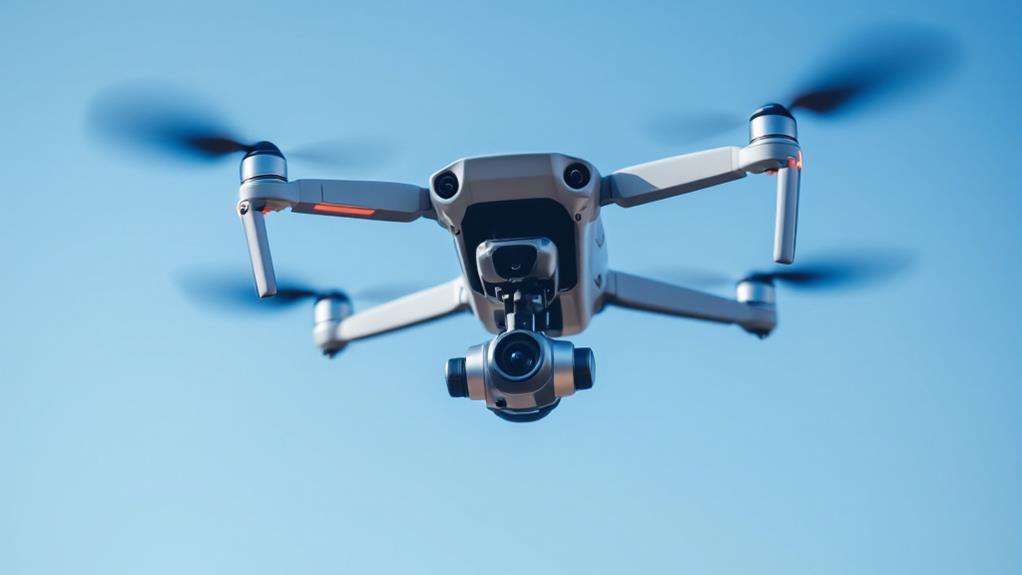
You can add a gimbal to a drone, and it's a great way to boost your aerial photography and videography. Gimbals stabilize your camera on three axes, ensuring smooth, blur-free footage. Choose between 2-axis or 3-axis types, with the latter offering superior stabilization. Make sure the gimbal is compatible with your drone model for the best results. Installation involves connecting the motor wires and securing the gimbal with provided screws. After setup, you should perform calibration tests to ensure stability. Interested in experimenting with advanced filming techniques? A quality gimbal might just enhance your photography skills further.
Key Takeaways
- Yes, you can add a gimbal to a drone if it's compatible with the drone model.
- Ensure the gimbal is securely attached using supplied screws and vibration grommets.
- Connect gimbal motor wires to the drone's flight controller carefully for proper functionality.
- Verify firmware compatibility and install necessary drivers after gimbal installation.
- Calibrate the gimbal post-installation to ensure optimal camera stabilization during flight.
Understanding Drone Gimbals
When you're exploring aerial photography, understanding drone gimbals is crucial. A gimbal acts as a support system that uses calibrated electric motors to maintain camera stability on three axes, ensuring your footage remains smooth and steady despite the drone's movements. This technology has its roots in maritime applications, originally designed to keep instruments upright. Its adaptation to aerial photography has significantly enhanced the quality of videos and images you capture from the sky. Modern drones, which represent a significant evolution from early aerial devices, have integrated gimbals to provide superior image stabilization. There are two main types of drone gimbals: 2-axis and 3-axis. The 3-axis gimbal offers superior stabilization, which is essential for professional-grade footage. However, it's typically heavier than its 2-axis counterpart, which might be a consideration if you're mindful of your drone's payload capacity. Installing a gimbal is usually straightforward, with many models coming pre-calibrated, making them beginner-friendly.
Integrating a drone gimbal is essential for reducing vibrations caused by drone motors. This results in clearer, sharper images and videos, allowing you to focus on capturing breathtaking aerial views without worrying about stability issues. By effectively utilizing a gimbal, you can elevate your aerial photography, ensuring every shot is as smooth as possible.
Selecting the Right Gimbal
Understanding how gimbals stabilize your footage is just the first step in enhancing your aerial photography. To select the right drone camera gimbal, compatibility with your specific drone model is crucial. Many drones, like DJI models, have camera gimbals designed specifically for them, ensuring optimal image stabilization and functionality.
When deciding between 2-axis and 3-axis gimbals, remember that 3-axis gimbals provide superior image stabilization but usually weigh more. They're ideal if you're aiming for professional-grade footage. If you're starting out, consider pre-calibrated options, which simplify setup and reduce technical adjustments.
Remote control integration is another feature to look for, offering enhanced usability and flexibility during filming. This feature allows you to control your camera gimbal easily, adapting to different shooting conditions.
Researching various options and reading customer reviews on platforms like Amazon can help you gauge performance and reliability. Here's a quick comparison:
| Feature | Consideration |
|---|---|
| Compatibility | Match with your drone model |
| Axis Options | 2-axis vs. 3-axis |
| Weight | Heavier for 3-axis |
| Remote Control | Enhances usability |
| Pre-Calibration | Ideal for beginners |
Installing a Gimbal
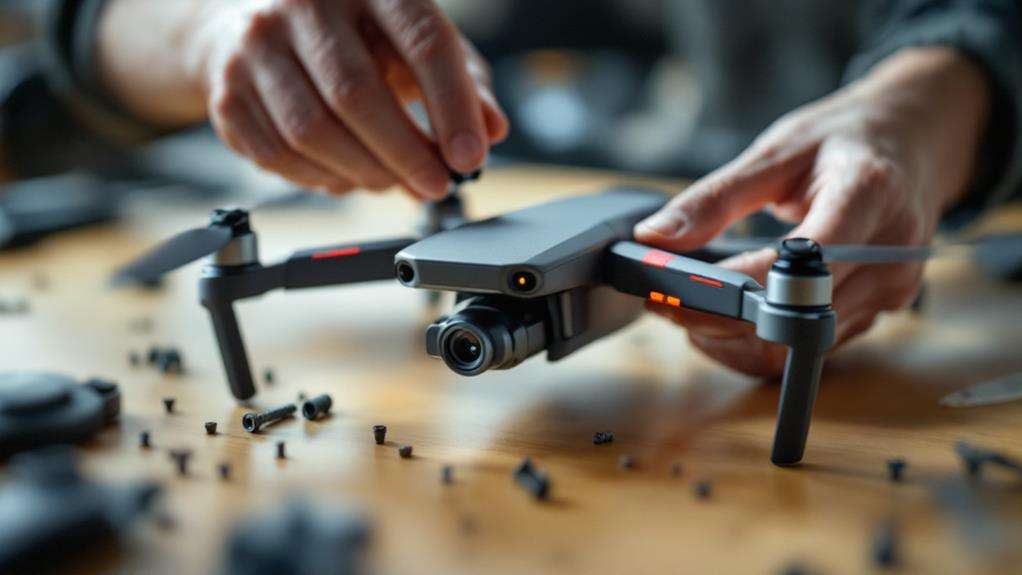
Installing a gimbal on your drone requires careful attention to detail to ensure optimal performance. First, make sure the gimbal is compatible with your specific drone model. Different drones have unique mounting and electronic configurations, so this step is crucial. When you're ready to install a gimbal, use the provided screws and vibration grommets to securely attach it to the drone frame. This helps minimize interference from the drone's motors, ensuring smoother footage. Advanced stabilization technology, found in modern gimbals, ensures smooth footage even in challenging conditions, eliminating shakiness in aerial shots.
Next, connect the gimbal's motor wires to your drone's flight controller. Follow the manufacturer's instructions closely, ensuring proper soldering and secure connections. This step is vital for the gimbal to function correctly and communicate effectively with the drone's control systems. After the physical installation, move on to the software setup. Verify the firmware compatibility and install any necessary drivers to ensure the gimbal operates smoothly.
Once everything's set up, conduct calibration and initial tests. This ensures the gimbal stabilizes the camera properly during flights. Adjust the PID settings if needed to enhance performance. By following these steps, you'll successfully install a gimbal on your drone, ready for stable and high-quality aerial footage.
Benefits of Using a Gimbal
With your gimbal installed, you're ready to explore the many advantages it brings to aerial photography and videography. Drone gimbals are game-changers in capturing that perfect shot, providing top-notch stabilization that minimizes the impact of your drone's movement on camera output. This means you get smoother, more professional-looking footage, which is crucial if you're aiming for high-quality content.
Thanks to advanced sensors and motors, gimbals help you achieve professional-grade footage, making them indispensable for filmmakers and photographers. They offer smooth transitions and dynamic shots, significantly improving overall image quality and reducing blur. This superior stabilization ensures your aerial captures are consistently sharp and clear, which is vital when you're pushing the boundaries of what's possible in filming.
Moreover, user testimonials often highlight how gimbals encourage trying out advanced filming techniques. They open up a world of creative possibilities, enabling you to elevate your aerial content to new heights. It's no wonder gimbals are becoming increasingly popular in industries like real estate and filmmaking. By delivering high-quality visuals consistently, they're transforming how professionals approach aerial videography and photography, ensuring every project looks its very best.
Troubleshooting Gimbal Issues
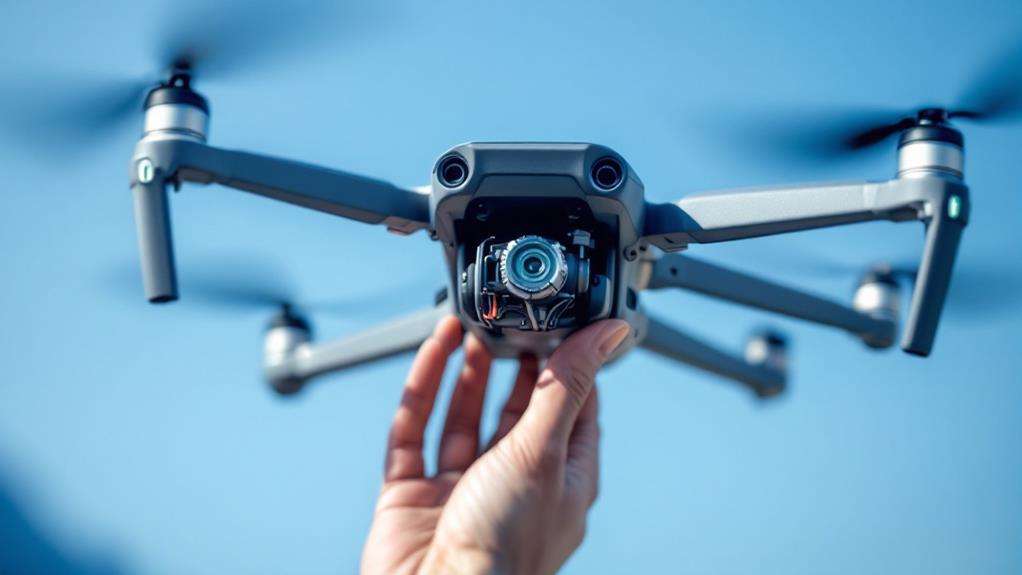
Why do gimbal issues arise, and how can you address them effectively? Gimbal problems often stem from mismatched gimbal and camera combinations in UAVs, leading to persistent warning messages. Ensuring your gimbal and camera are compatible is the first step to avoiding these errors. If you're facing tilted horizons, calibrating the gimbal on a flat surface is essential. This setup ensures that your gimbal remains level, providing stable footage during flights.
Overload warnings are another common issue, usually caused by obstructions or excessive weight on the gimbal. Inspect the gimbal's mounting and components carefully, ensuring nothing is obstructing its movement. Abnormal vibrations during flight can be a sign of wiring or connection problems. To address this, check solder joints and verify the IMU orientation. Proper connections are crucial for maintaining stability and performance.
If these solutions don't resolve your gimbal issues, don't hesitate to reach out to the manufacturer. They can offer specific troubleshooting steps and provide firmware updates tailored to your UAV model. Manufacturer support is invaluable for tackling persistent problems, ensuring your UAV's gimbal and camera function optimally.
Market Trends and Innovations
In recent years, there's been a remarkable surge in demand for aerial photography and videography, driving significant advancements in gimbal technology for both consumer and professional drones. Drone manufacturers are capitalizing on these trends by developing innovative gimbals that are designed to meet the needs of a diverse user base. Lightweight designs and enhanced stabilization features are now standard, making gimbals more accessible for hobbyists and commercial users alike.
One of the most exciting innovations is the integration of AI capabilities in gimbals, allowing for advanced functions like object tracking and automated zoom. These features significantly improve filming efficiency and quality, giving you the ability to capture stunning shots with ease. Market trends show a growing preference for gimbals that support multiple camera types and configurations, catering to applications ranging from real estate to film production.
Make sure to consider gimbals with continuous improvements in battery life and motor efficiency. These enhancements enable longer flight times and more complex filming techniques, ensuring you won't miss a single shot. By embracing these market trends and innovations, you can elevate your aerial photography and videography to new heights.

